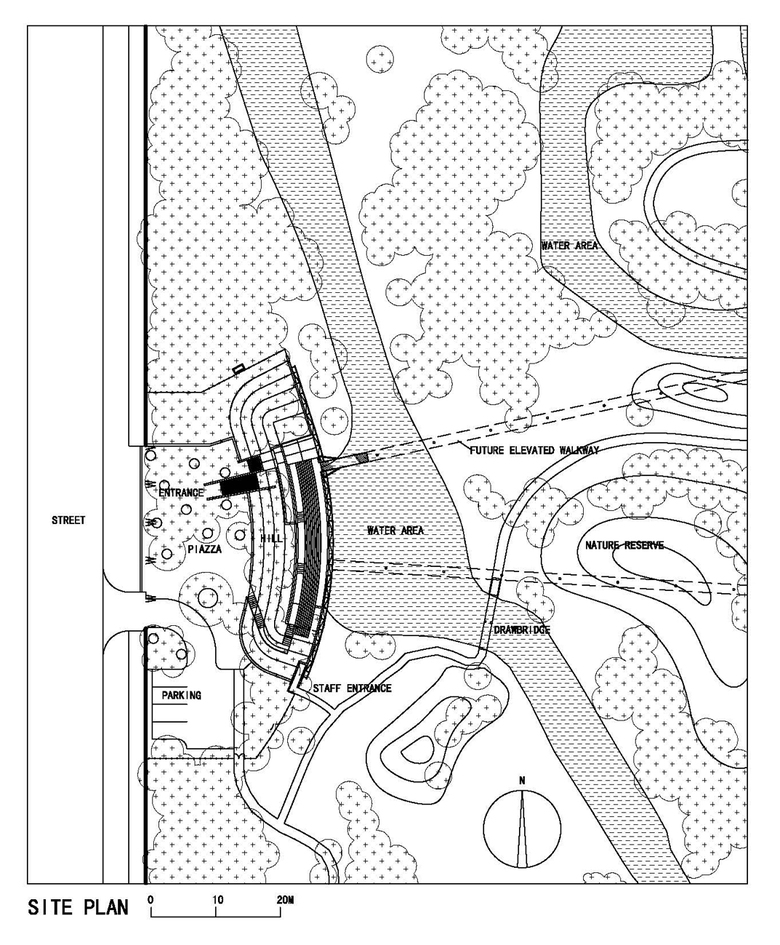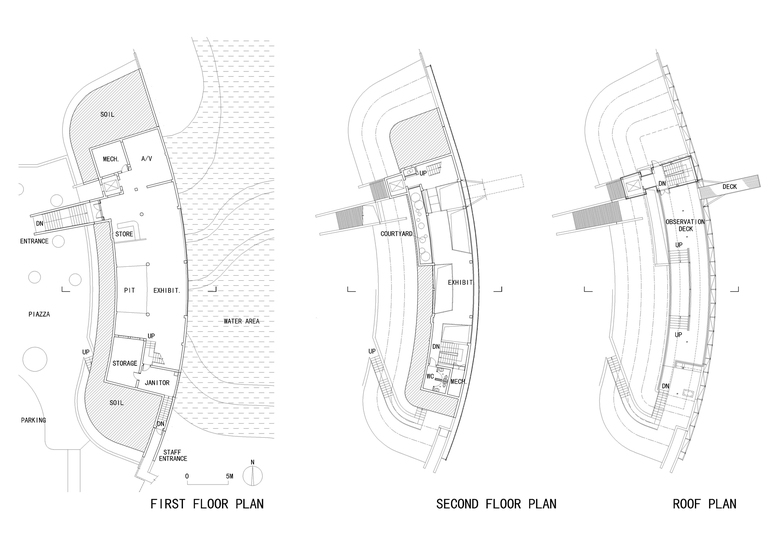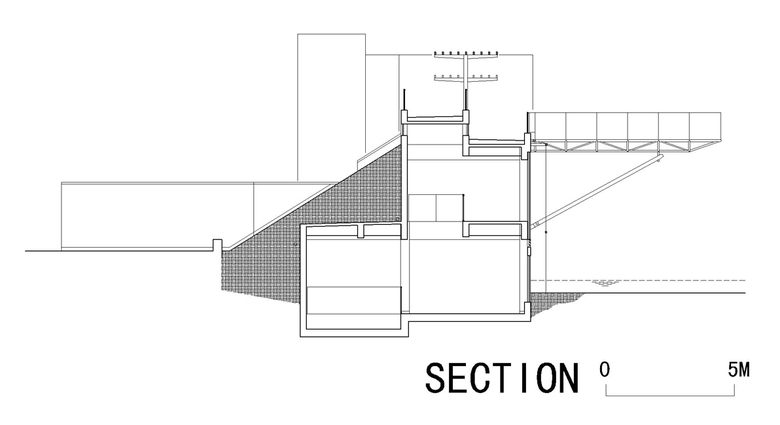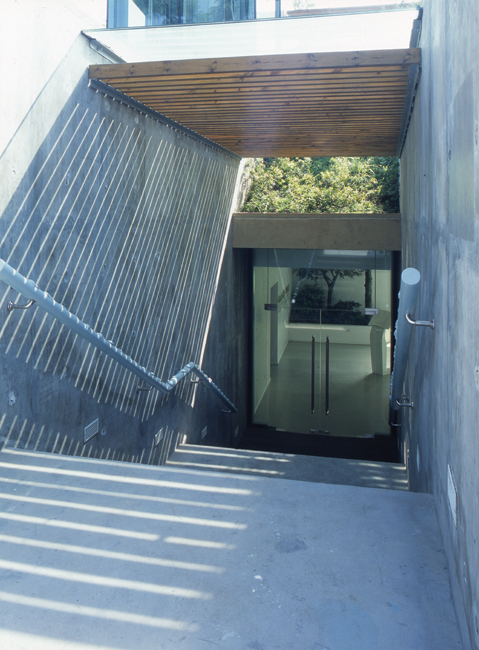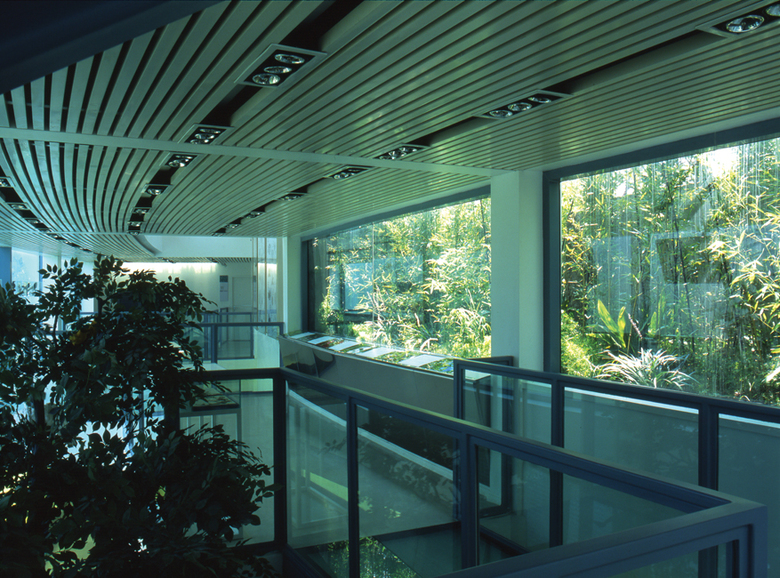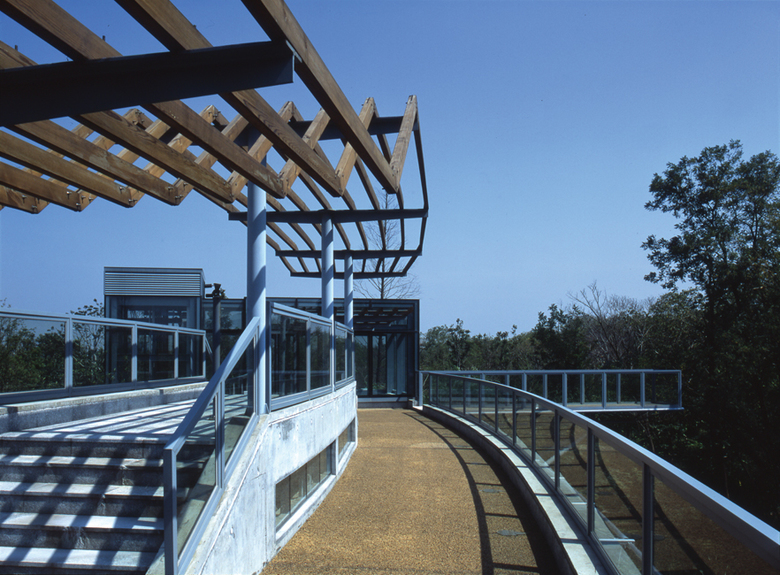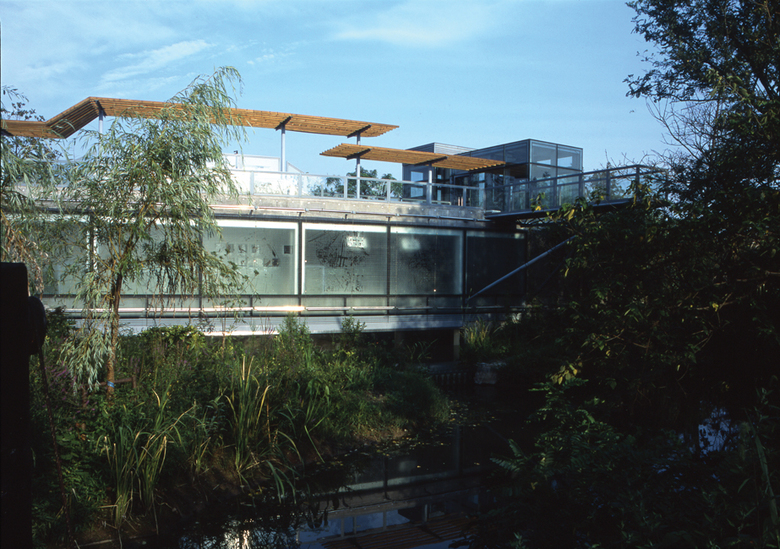New Jiangwan Ecological Exhibition Center
Shanghai
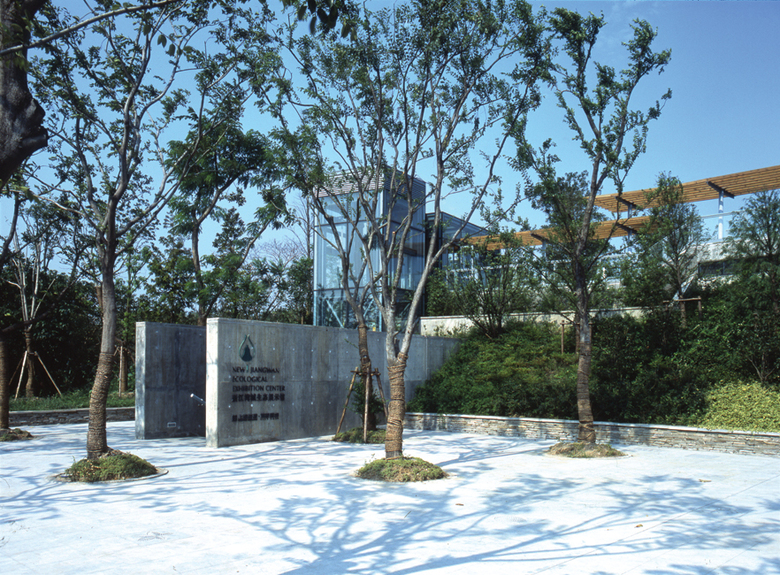
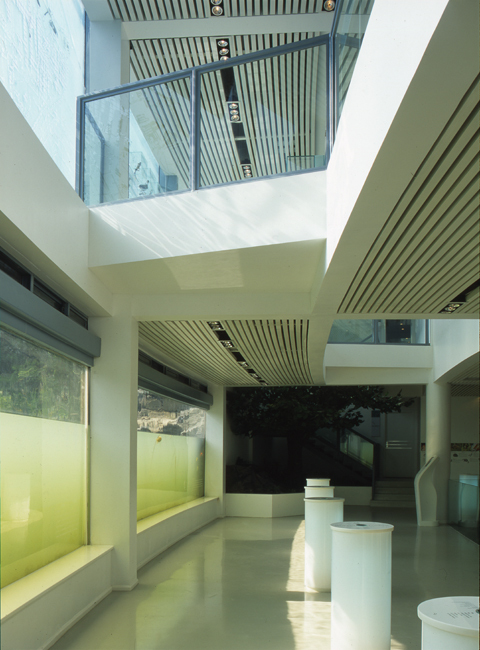
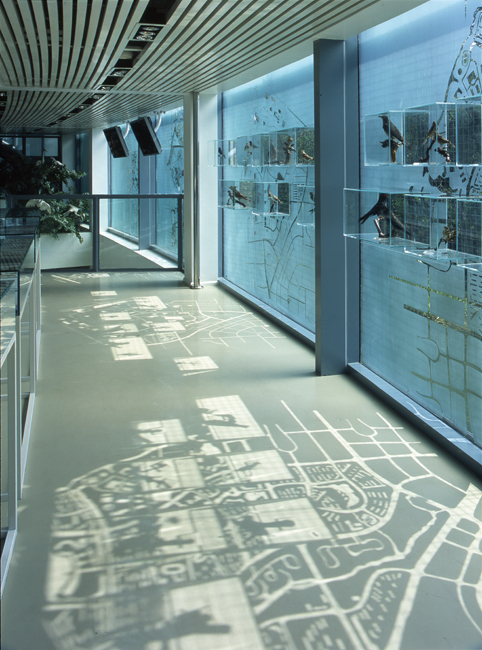
- Architects
- Pu Miao
- Localització
- Songhu Road at Yingao Road, Shanghai
- Any
- 2005
- Client
- Shanghai Chengtou (Division for New Jiangwan City)
- Equip
- Pu Miao
- Engineering
- Shanghai Landscape Architecture Design Institute
- Exhibition
- Shen Haopeng Design Studio
Site and Program
On the north edge of Shanghai city, an isolated wetland of about 10 hectares has remained undisturbed for several decades. Now it becomes a nature reserve and a part of the park system of New Jiangwan City, a new town developed around the wetland. Since the fragile ecological system can only afford guided tours of small groups, it is necessary to establish an exhibition /observation center at its west side for the public to use. In the architect’s long-term plan, two elevated walkways will radiate from the Center into the reserve so the entire area will be accessible to the public.
Three Design Concepts
1. Breaking the “Black Box”
Considering the unique characters of the exhibits, the design breaks away from the “black box” stereotype of museum design, making live species and outdoor natural environment the main exhibits. Rising two stories high, a semi-underwater window nearly 13 meters long shows a complete section of the wetland from its bottom and water body to its shore. The sunken courtyard outside of the west wall on the second floor displays through a window live plants typical in the wetland. Five cameras are installed across the reserve. Visitors can see real-time images anywhere in the reserve by pointing a laser pointer to the corresponding area of a model on the first floor. Finally, the observation deck on the roof affords visitors a direct, panoramic view of the wetland. A cantilevered observation deck extends 7.5 meters into the wetland to allow visitors a closer look of the tree tops and birds.
2. Gradual Revelation
The design borrows the idea of “gradual revelation” from traditional Chinese architecture to create a sense of mystery so that visitors will treasure the reserve even more. To people on the street the building appears as a small hill with many trees, blocking views further into the reserve. After walking downwards into the half-buried first floor, visitors are attracted to the underwater window which makes people temporarily forget what happen above the water surface. On the second floor, a layer of metal mesh (to be covered with ivy) hangs outside of the glass wall facing the reserve. In addition, a layer of film is glued on the glass wall to show historic maps of Jiangwan. Only after the visitors climb onto the roof deck, the scenery of the reserve fully reveals itself to them. People can then return to the entry plaza through a path on the slope of the man-made hill.
3. Green Architecture
Because this reserve will become a tiny oasis within a dense city, the project should consume as little as possible the green area and, ideally, should increase the greenery. Accordingly, the west side of the building is covered with earth and plants similar to those in the reserve. On the east elevation, a green mesh shields the building too. Considering the fact that the building occupies the former site of a house, this design actually increases the total amount of planted area. The earth shelter design also improves the energy conservation of the structure. Plus, openable windows on the first and roof levels will allow passive ventilation during the mild weathers.
Publication/Award
Journals Architectural Journal (China, 7/2006), Time+Architecture (China, 6/2006), and books Sixty Six -World New Architecture (2006) and Contemporary Architecture in China 2004-2008 (2008)
Award of Excellence, The First Architectural Design Awards, the Architectural Society of China (ASC), Shanghai Chapter, 2006
Projectes relacionats
Revista
-
Swimming Sustainably
Avui
-
Saving the Century and Consumers Buildings
hace 4 dies
-
This Week in Lawsuits
hace 4 dies
